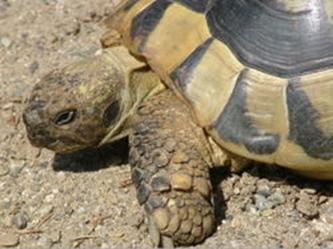


|
Anapsida:
The anapsids are a group of amniotes, characterized by skulls without openings near the temples. The only extant members are the Testudines - turtles, tortoises, and terrapins. Various other groups, however, are known from Permian and Triassic fossils. The anapsids have traditionally been treated as a subclass of the class Reptilia, but as this group is paraphyletic they are sometimes placed in a separate class Anapsida. Most of the anapsid orders, including the millerettids, nyctiphrurets, and pareiasaurs, became extinct in the late Permian period by the Permian-Triassic extinction event. Both the procolophonids and some ancient ancestors of the testudines managed to survive into the Triassic, and the testidunes are the only surviving order. Recently it has been suggested that the Testudines are not actually a member of the Anapsid clade, but instead diapsids, and that the similarities ensued from convergent evolution. Those favouring this hypothesis are divided on which clade within the diapsids to place the Testudines: either the lepidosaurian or archosaurian branches. The salient features of subclass Anapsida are:
1.The roof of the skull is complete.
2.The Fossae are absent.
3.The quadrature is connected to the otic bones.
4.The limbs are strong.
5.The body is enclosed in a carapace.
The orders coming under this sub-class are:
1.Cotylosauria(extinct) 2.Chelonia |
